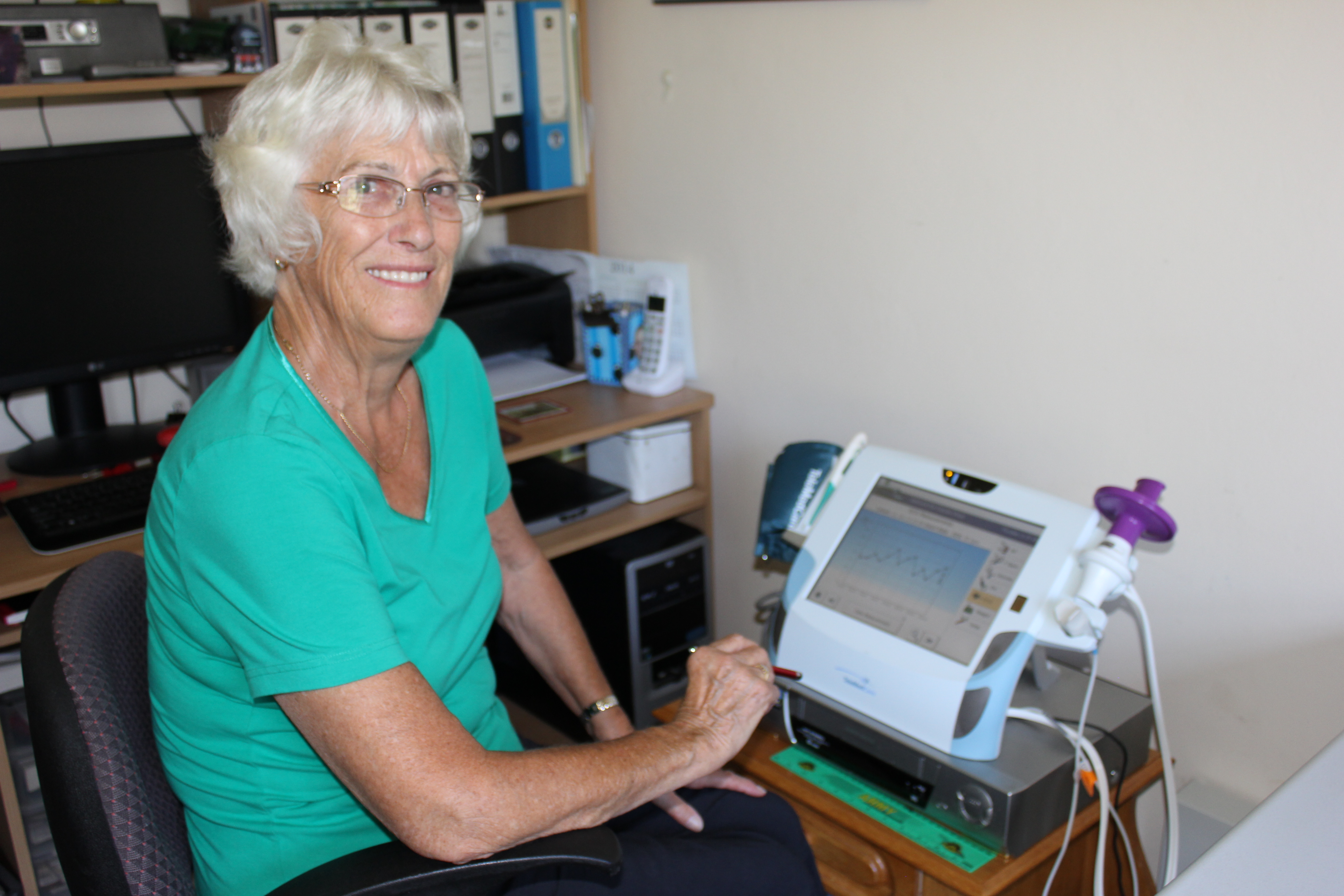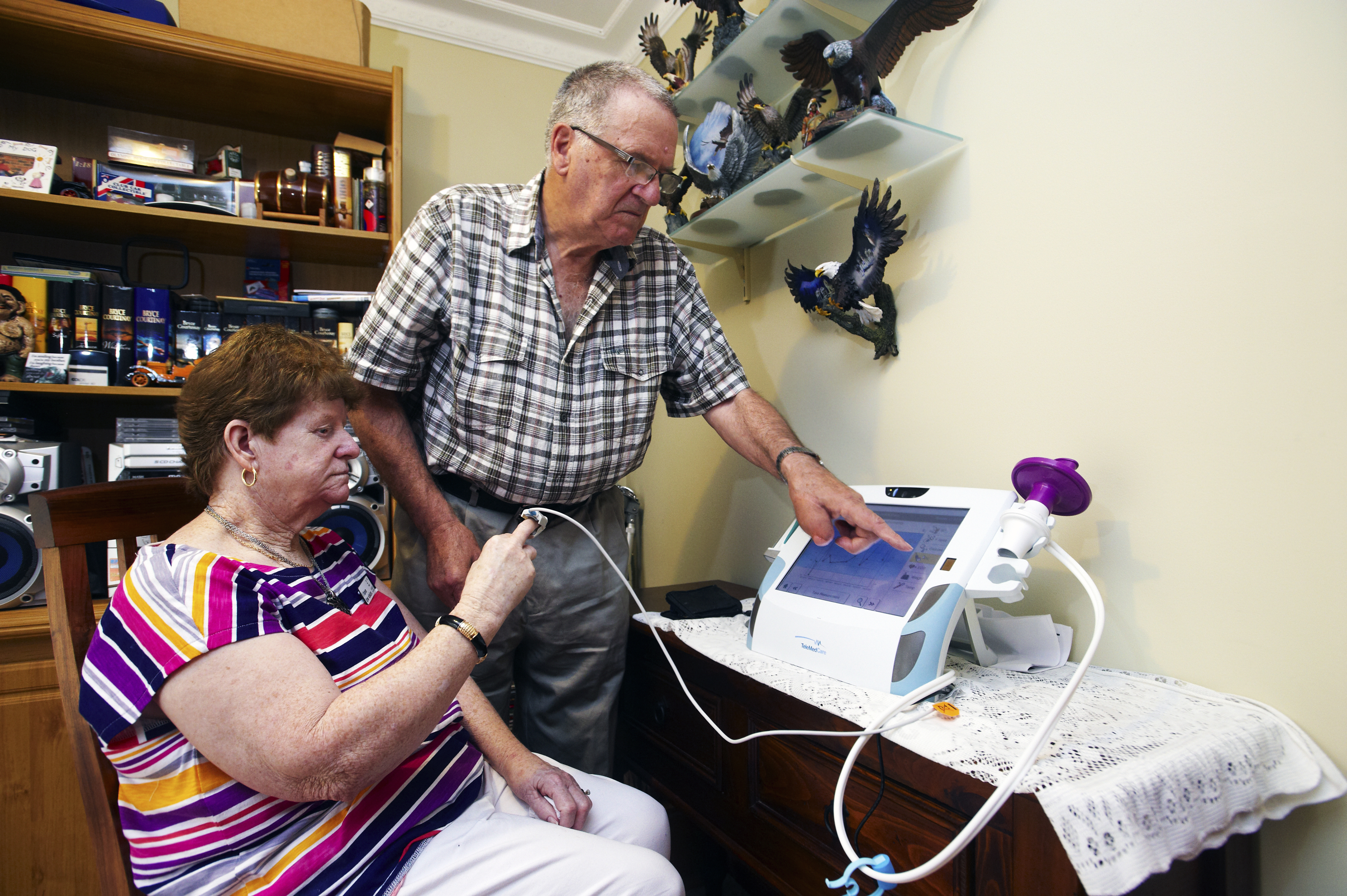
Frances using the telehealth device.
Our new home monitoring tool is helping elderly Aussies like Frances better manage chronic disease.
By Ali Green
Almost one in four older Australians are affected by chronic health conditions, and close to 1.2 million currently suffer from more than one. Given our ageing population, this number is set to increase significantly by 2030, adding more pressure to our health system.
Life for a chronic disease sufferer with complex conditions like diabetes, heart or lung disease typically means two to three hospital stays per year, on top of multiple visits to the GP for regular health checks.
In Australia’s largest clinical telehealth trial, we’ve equipped a group of elderly patients with broadband-enabled home monitoring systems to help them manage and monitor their conditions from home.
Patients can use the machines to measure their blood pressure, blood sugar, ECG (to detect heart abnormalities through electrical signals), lung capacity, body weight and temperature in a process that generally takes around 10-20 minutes.
The monitoring system’s large screen helps guide patients through the different procedures, and the data is sent off to a secure website where it becomes immediately available to a care team including the patient’s nurse and doctor. Daily stats are checked regularly by a specialist nurse who can assist the patient via telephone if there are any changes in their regular patterns.
150 patients across Australia are testing out the machines as part of the CSIRO-led trial. Here are a few of their stories.
Janice and Bill
Victorian retiree Janice suffers from an irregular heartbeat, diabetes and low blood pressure – conditions that require twice weekly visits to her doctor and multiple hospital stays to be controlled. She also has diabetes related retinopathy which has caused her to lose most of her vision, making medical visits difficult for both herself and husband Bill.
Since using the telehealth monitoring system, Janice’s GP and hospital visits have reduced significantly, and she can better manage her symptoms to prevent hypoglycaemic episodes. Bill also has a clearer idea of how Janice is doing from day to day.
“If Janice’s blood pressure reading is particularly low, I can prevent any dizzy spells by getting her to sit down and giving her a glass of water. If her measurements are stable, I can pop out to do some shopping or walk the dog knowing that she should be fine on her own for a little while,” says Bill.

Bill helps Janice record her blood oxygen levels using the telehealth home monitoring system.
Jack
Jack has ischaemic heart disease and chronic obstructive pulmonary disease (COPD). This affects his airways causing breathlessness, a chronic cough and mucus build-up.
During a routine check of Jack’s telehealth monitoring data, his nurse Lay noticed that his ECG results were slightly unusual. This prompted the nurse to call Jack, who complained of shortness of breath. An appointment was made with Jack’s doctor for a full ECG, which turned out to be fine.
As a result of this episode, Jack’s nurse arranged to visit him at home to discuss a medication regime and teach him to use his medicated spray. This meant Jack could self-manage his shortness of breath and prevent unnecessary doctor visits.

Jack’s nurse Lay helps him measure his lung capacity using the telehealth system.
Frances
75-year-old Frances (pictured top) has a respiratory condition called bronchiectasis. This can easily develop into a chest infection without early warning and lead to a stay in hospital.
Every day, Frances conducts a ten minute check up with the telehealth monitoring system in between washing up the breakfast dishes and getting ready to go out. A nurse at the other end of the internet connection checks Frances’ measurements, looking for any signs of early deterioration.
“I was surprised by the idea of self-monitoring at first, but now that I’m used to it, I think it’s a terrific idea. It has really helped me to better understand my health,” says Frances.
As Australia’s population ages and more demand is placed on our health system, telehealth can help reduce patient hospitalisation, and the related costs, by allowing patients to better manage their chronic diseases from home.
The Home Monitoring of Chronic Disease for Aged Care project is an initiative funded by the Australian Government.
***
CSIRO is participating in One in Four Lives: The Future of Telehealth in Australia event, at Parliament House this morning from 7:45am AEDT.
Media: Sarah Klistorner M: +61 477 716 031

